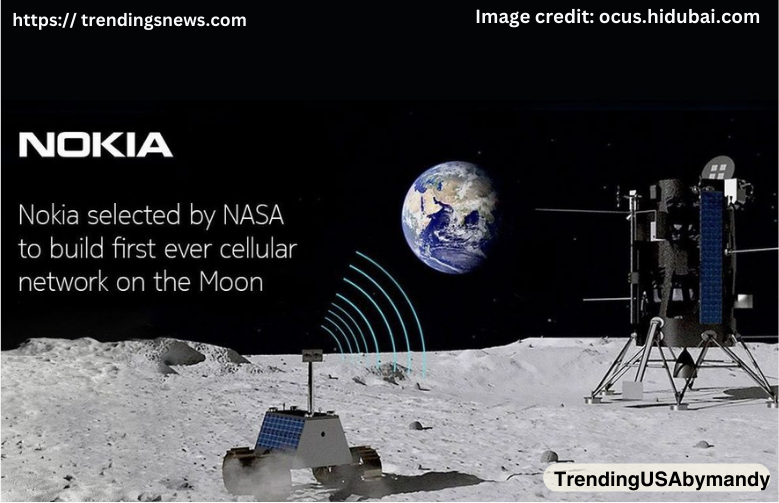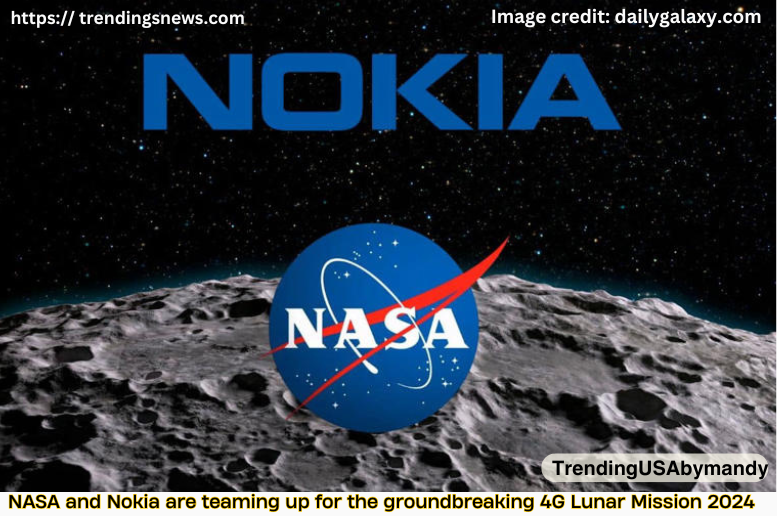NASA Nokia 4G Lunar Mission 2024: Discover how NASA and Nokia are making history with the first 4G lunar network in 2024! 🌕📶
Learn about the groundbreaking technology, challenges, and future implications of this mission for space exploration. 🚀✨
Introduction
For the first time in history, the Moon will have its own 4G network!
In a groundbreaking collaboration, NASA and Nokia are set to launch the NASA Nokia 4G Lunar Mission 2024, a revolutionary step toward establishing reliable communication on the lunar surface.
This mission, part of NASA’s Artemis program, aims to transform how we explore, communicate, and eventually inhabit the Moon. Let’s dive into the details of this historic endeavor!
The Mission Overview
The NASA Nokia 4G Lunar Mission 2024 is a pivotal moment in space exploration.
Nokia’s Lunar Surface Communication System (LSCS) will deploy the first-ever mobile network on the Moon, enabling high-definition streaming, real-time telemetry, and seamless connectivity for lunar rovers, landers, and future astronauts.
This mission is not just about connectivity—it’s about laying the foundation for sustainable lunar exploration and beyond. By 2024, the Moon will no longer be a silent neighbor; it will be a hub of communication and innovation.
How It Works
The Technology Behind the Lunar 4G Network
Unlike traditional satellite systems, Nokia’s lunar network uses 4G LTE technology, similar to what we use on Earth.
The system is designed as a “network in a box”, a compact unit that includes all the necessary components for a functional 4G network, except for the antenna and power source.
Challenges of Lunar Connectivity
Setting up a network on the Moon is no small feat. The system must withstand:
- Extreme temperature fluctuations (from -173°C to 127°C).
- High levels of radiation.
- Intense vibrations during launch and landing.
Despite these challenges, Nokia’s LSCS is engineered to operate flawlessly, ensuring uninterrupted communication for lunar missions.
Why It Matters
A Game-Changer for Lunar Exploration
The NASA Nokia 4G Lunar Mission 2024 is a critical step toward establishing a permanent human presence on the Moon. Reliable communication is essential for:
- Real-time command and control of lunar rovers and landers.
- High-definition video streaming from the Moon.
- Safe and efficient operations for future astronauts.
Paving the Way for Artemis and Beyond
This mission aligns with NASA’s Artemis program, which aims to return humans to the Moon by 2027.
The lunar network will support Artemis by providing the communication backbone needed for exploration, resource mapping, and even lunar tourism.
NASA and Nokia’s Roles
NASA’s Vision
NASA is providing the mission framework and funding, ensuring that the lunar network aligns with its broader goals for space exploration.

Nokia’s Expertise
Nokia, a leader in telecommunications, brings its cutting-edge technology to the table. Thierry Klein, president of Nokia Bell Labs Solutions Research, emphasized that this mission is just the beginning.
This breakthrough has the potential to grow into a comprehensive lunar communication system,” he explained.
Future Implications
Scaling Up: From 4G to 5G
While the initial deployment focuses on 4G, future versions of the lunar network could incorporate 5G technology, enabling even faster and more reliable communication.
Interplanetary Connectivity
The success of the NASA Nokia 4G Lunar Mission 2024 could serve as a blueprint for future missions to Mars and beyond. Imagine a day when astronauts on Mars can video call Earth in real time!
Fun Facts or Trivia
- The lunar 4G network will operate at a speed comparable to Earth’s 4G networks.
- Astronauts might use the network to stream high-definition videos of their lunar adventures.
- The Moon’s lack of atmosphere means the network will have minimal interference, ensuring crystal-clear communication.
Potential Challenges and Concerns
Interference with Radio Astronomy
Radio astronomers have raised concerns about signal interference. The lunar network operates on frequencies close to those used for observing distant galaxies.
To address this, Nokia received a special regulatory waiver for the IM-2 mission. However, future deployments will need dedicated frequency bands to avoid long-term disruptions.
A Stepping Stone for Future Space Exploration
The NASA Nokia 4G Lunar Mission 2024 is more than just a technological achievement—it’s a glimpse into the future of space exploration.
By establishing a reliable communication network on the Moon, we’re laying the groundwork for interplanetary connectivity and the eventual colonization of other worlds.
Nissan Honda Merger 2024: A Parallel Innovation
Just as NASA and Nokia are revolutionizing lunar connectivity, the automotive industry is witnessing its own groundbreaking collaboration.
The Nissan Honda merger of 2024 aims to combine the strengths of two automotive giants, focusing on electric vehicles and autonomous driving technology.
This partnership, much like the NASA-Nokia collaboration, highlights the power of innovation and teamwork in shaping the future.


2 thoughts on “NASA Nokia 4G Lunar Mission 2024 Unveiled | Transforming Moon Connectivity for a Brighter Future | Pioneering the Future of Lunar Communication”